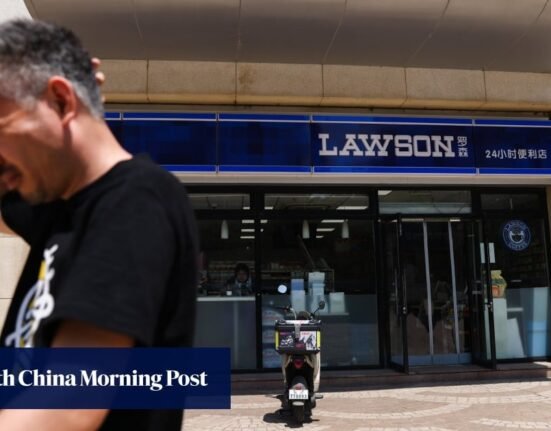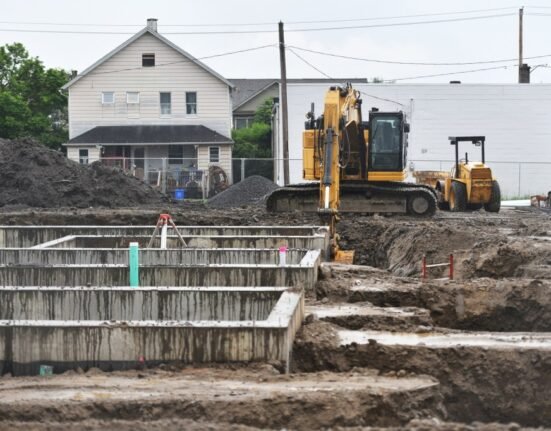
Trump’s auto tariffs to hit $460 billion of US vehicle, parts imports
As Donald Trump’s 25% tariff on U.S. auto imports kicks in, the levies look set to upend the industry. A Reuters calculation shows the duties will hit some $460 billion worth of cars and parts every year. The U.S. president says that will create jobs and boost the economy.
- The cost of auto repairs could rise by several hundred dollars, depending on the parts and if they are imported and subject to tariffs.
- Auto experts advise people to get car repair work done in the next month or so before parts inventory dries up and tariff prices kick in.
- Even insurance rates could be affected by higher costs as policies renew later in the year into next year.
Linda Cauley leaned back in the driver’s seat of her 2010 Chevrolet Colorado pickup that she drove to the Bloomfield Township library in late March. She waited for her nephew in the comfy, old vehicle she and her husband have put 150,000 miles on — with no plans of parting with it.
If you think that’s impressive, consider that her other vehicle — a 2014 Jeep Cherokee — has 260,000 miles on it.
Cauley, 68, said she and her husband will drive the old trucks until the vehicles die. The Waterford couple does not want to pay the steep price to buy a new or used car — especially now that prices are expected to climb even higher on 25% tariffs President Donald Trump put on imported autos and auto parts.
“We’re lucky we’re not in debt,” Cauley said. “I’d prefer not to go in debt over a car. A new car payment could be $1,000 a month and we’re both retired and so we gotta look at that, especially … (that) they’re meddling in … Social Security.”
Experts have estimated that tariffs could add anywhere from $3,000 to $20,000 to the prices of new cars, depending on the make and model. But it isn’t just prices for new — and even used — vehicles that are expected to increase as automakers look to offset high tariffs on imported parts or the costs to import vehicles into the country. Experts also warn that the cost of auto repairs will likely rise too. That’s because many parts used in repairs come from other countries and will be subject to the tariffs.
Parts prices will put pressure on car insurance rates
“I anticipate (tariffs) are going to have a big effect on parts more than anything else,” said Skyler Chadwick, director of product consulting at Cox Automotive. “Anyone who walks into a parts department understands that it’s a United Nations. What I mean by that is that you can’t walk through a parts department without seeing stickers from Canada, Mexico … Parts is one of the most globalized areas of a dealership or the automotive industry, even when it comes to building an automobile.”
Those increased costs on parts will have another impact: auto insurance rates. Insurers will have to pay more for claims on collision repairs. They are likely to pass that extra cost on to consumers with higher premiums, experts said. But just how high remains to be seen.
[STAY UP TO DATE: Sign up for our Daily Briefing newsletter today to get the Free Press in your inbox. ]
“Tariffs on parts used to repair vehicles will filter down to insurance rates, but the biggest driver of rates are the costs of stolen cars — up more than 50% in the last five years — and of personal injury payments, not the cost of repair parts,” Erik Gordon, a business professor who specializes in the auto industry at University of Michigan’s Ross School of Business said.
Gordon said it would be difficult to calculate how much rates could rise, but he does not see it to be substantial because it costs more to fix a person hurt in a collision than it costs to fix the car.
“The cost of parts to a repair shop is a fraction of the bill to an insurance company because the repair cost also includes labor and overhead,” Gordon said.
A spokeswoman for the Insurance Information Institute sent the Free Press the following statement on behalf of the institute: “The tariffs announced last week, which will impact imported vehicles and auto parts, are expected to inflate the cost of new cars, repairs and used car values due to tight profit margins for manufacturers and the interconnected global supply chain. The tariffs could also lead to broader macroeconomic and geopolitical disruptions, potentially expanding the impact on U.S. property/casualty insurers. This could generate higher premiums for home insurance and business insurance. Some auto insurers have indicated the tariffs could lead to higher premiums by the end of 2025. For all consumers, auto rates would not change until their insurance policy is up for renewal. No premium changes will be implemented on existing policies.”
Just a few weeks’ supply of parts left
According to Cox, about 44% of automakers’ repair parts are imported, and aftermarket parts are mostly sourced from Taiwan. Once repair shops start to run low on those parts and they must be ordered from overseas, the parts will be subjected to tariffs. Repair shops will most likely pass the added costs on to consumers, Chadwick said.
Chadwick expects customers to see widespread cost hikes, which means that delaying maintenance now will lead to paying more later.
“If I was a consumer, I would not be putting off my service and repairs. Let’s take brakes into consideration here. If I look at a brake job, on average we see between a $500 and $800 repair on each axle depending on your (automaker) and brand,” Chadwick said. “You could see essentially the cost going up between $150 to $200 in a price increase on those specific parts. Everybody’s going to be affected.”
Last week, Trump enacted the 25% tariffs he imposed on imported vehicles and parts, providing an exemption until May 3 for some parts that comply with the United States-Mexico-Canada Agreement. Tariffs are taxes importers pay when they bring goods over borders.
Many in the auto industry are still studying the exact application of the tariffs and how they will impact the industry, but Chadwick estimates that dealerships and independent shops have about a four- to six-week supply of parts in inventory. That means consumers would still get repairs at a standard rate before prices start rising, if they act within that time frame.
“You’re not going to see dealerships jumping to order a bunch of extra parts to make sure tariffs (on May 3) don’t implicate their service because that’s just straight cash, cash coming out of their own pockets to buy those parts and to keep them in inventory,” Chadwick said. “So they’re not going to do that today.”
‘Sitting on a gold mine’
Chadwick said many car dealerships are “sitting on a gold mine” in terms of the parts they have in stock and the ability to do repairs ahead of tariffs.
“You should be working on your efficiencies each day and to get your customers in today, not in May or a couple of weeks when those parts could be affecting that cost for those repairs,” Chadwick said. “How many times does a customer decline a repair and now they’re sitting at home and wondering, ‘Man, should I get this work done?’ Go get it done today because we could be having some different conversations in a couple of weeks.”
The leadership at LaFontaine Automotive Group is working to stay ahead of tariffs and it is trying to be transparent by actively marketing repair work to its customers.
The dealership group, which has 43 stores in Michigan, is in “active communication” with all 28 brands it sells and with its parts distributors to assess and navigate any impacts from the tariffs, said spokesman Max Muncey. It is also being proactive with customers.
“We have reached out to guests who have visited for service within the last three months but declined recommended repairs,” Muncey said. “We are letting them know that we currently have their necessary parts in stock and can complete their service without added costs from potential tariff increases.”
The outreach has resulted in “an uptick in service work” across the dealerships, he said.
“Not only are more customers bringing their vehicles in for service, but we have also experienced increased demand for our mobile service vans, which go directly to guests to complete necessary repairs and maintenance at their convenience,” Muncey said.
Auto repair still cheaper than a new car
Also, LaFontaine Automotive Group is in a unique position to help mitigate supply challenges for others.
The company is a leader in wholesale parts. It operates LaFontaine Parts Distribution Centers in Livonia and Grand Rapids. The two locations total over 150,000 square feet of parts and stock nearly $25 million in parts inventory.
The centers supply parts for LaFontaine’s 43 dealerships, eight collision centers and more than 3,000 repair shop customers across Michigan and surrounding states, Muncey said. The extensive parts network keeps LaFontaine well-stocked with parts for repairs.
He also offered this bit of insight, which the Cauleys would appreciate.
“Even with a 25% tariff, the effect on individual repair costs is significantly lower than on the price of a full vehicle,” Muncey said. “The vast majority of commonly replaced parts — such as quick-service and consumable components — are typically less than $1,000, meaning the direct impact on these parts remains relatively contained.”
Chadwick said tariffs remain a bit of a “moving puzzle” because no one knows how long they will remain in place. But there is an expectation that many people will get a higher-than-usual tax return this year, which might inspire them to get their repairs done in the next couple of months.
Jamie L. LaReau is the senior autos writer who covers Ford Motor Co. for the Detroit Free Press. Contact Jamie at jlareau@freepress.com. Follow her on Twitter @jlareauan. To sign up for our autos newsletter. Become a subscriber.






